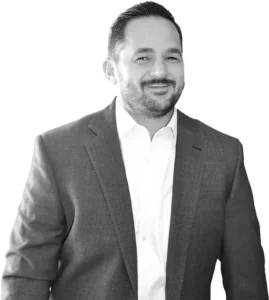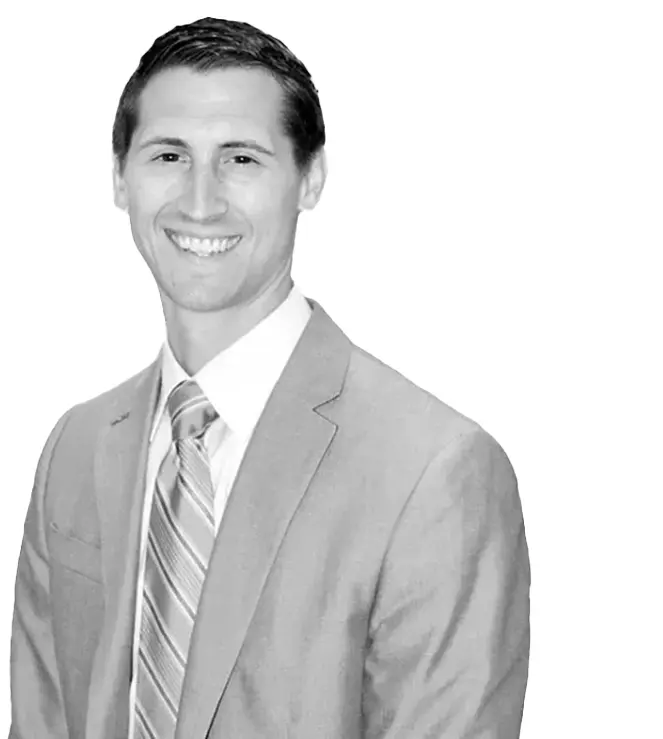Fitting in…
I just wanted to fit it.
Not just this one time, but lots of times.
When I was 13, I listened to rap music and watched NBA basketball. My shoes were shiny, expensive, and made for athletics, yet I wore them for all occasions. My jeans were oversized and baggy, and I wore them proudly. There was an image I was trying to maintain – knowingly or unknowingly – and I was absolutely serious in the moment, although I find it ridiculously comical in hindsight.
When I was 18, BMX racing was my life; BMX consumed me. I grew my hair out, dyed it black, got a lip piercing, and stretched out my ears. Like, I literally stretched out large holes in my ears – what was I thinking!?
Then I grew up. And I still wanted to fit in. No more lip piercings or Air Jordan’s. These were not the markings of a businessman. Suits. Now, my life was all about suits.
My journey started at Men’s Warehouse because I remembered some guy who looked like Bob Vila (actually George Zimmer) telling me, “You’re going to like the way you look. I guarantee it.”
Eventually, I’d graduate out of Men’s Warehouse and realize that things start to get pricey as you move up the “suits” food chain. The natural evolution from “off-the-rack” was to acquire custom suits tailored just for you.
Not Fitting…
And if you know me, you know I am frugal; you might even call me a miser.
So, how do I reconcile an expensive upgrade with a budget mindset? I found a business promoting custom suits at off-the-rack prices. Ha! I think you know where this story is going. Insert any economics adage you’d like: “You get what you pay for,” “If it looks too good to be true, it’s probably too good to be true,” “There ain’t no such thing as a free lunch.”
My measurements that were taken in Los Angeles were then sent to Indonesia for assembly and eventually arrived at my doorstep in Orange County. One shirt arm was literally inches longer than the other. After multiple corrections and attempts to rectify, remake, and resend, I settled with a full refund. I got all my money back, but I wish they could’ve refunded my time – what a waste.
Today, we will discuss what an off-the-rack portfolio design looks like, how to go about designing a tailored solution, and everything in between.
And off we go…
Weighing in…
One of the biggest problems in financial planning and portfolio design is that the financial tailor is often taking the wrong measurements. Let me explain…
Imagine walking into a tailor to get fitted for a suit. A man walks up with measuring tape draped over his shoulder, gripping a couple of pins in his teeth and a small notepad and pen peeking out of his shirt pocket – this guy looks the part. You think to yourself, “I came to the right place.” Then he makes a very odd request. The man pushes a scale over to you and asks you to step on it; he then pulls out the notepad and pen and records your weight. The man proceeds to tell you that he will have your garment ready by next Tuesday.
No measurement of your waist or chest and no measurement of your arms or inseam. No measurements at all, just your weight.
I don’t imagine you walk away from this experience with any confidence that this man will make you a suit that will meet your expectations. Why not? He didn’t collect the appropriate data to complete the task.
Age is Just a Number
Now, back to finance.
What is the primary metric many financial advice-givers use to design portfolios and tailor these portfolios to an individual’s needs? Age. There are many age-based investment solutions out there, and it has been ingrained into the financial culture that this (your age) is an appropriate metric for tailoring portfolios – it’s not.
You hear things like, “If you are young, you should be aggressive with your investments” or “If you’re approaching retirement, it is best to have a conservative portfolio.” These age-based fortune cookie statements are spoken as absolutes, and they should be challenged.
If an advisor is trying to design your portfolio based on just your age alone, he or she might as well be designing it based on your weight.
It’s All in the Design
First, let me clarify what I mean by “portfolio design.” Part of the financial planning process will be to sit down and decide where to invest your money. What will you own? Stocks? Bonds? Real Estate? CDs? And, how much of each will you own? This is the portfolio design process.
Back to our tailor for a moment. What information would we expect our tailor to collect to craft our perfect attire? Well, we’d expect two different types of information to be collected, and I will classify these as quantitative and qualitative. First, the quantitative, our tailor needs to know all of our measurements from top to bottom. Next, the qualitative, our tailor needs to know our style and preferences – he or she needs to know how we want this piece to fit. Do you like the cuff of your pants to rest on your shoes, or do you like highwaters? Do you like a traditional fit or a slim fit?
So, what are the quantitative and qualitative measurements needed for your financial tailor to craft your investment portfolio, you ask? Great question.
The Quantitative
Like we discussed, your age should not be the focal point for how your portfolio is designed.
BUT your expenses should be. That is your current expenses and/or future expenses. For the ideal portfolio fit, you need clarity when the money you have saved in this portfolio will be spent.
Let’s imagine that you have $5 million saved and you are ready to retire. You plan to spend $10,000 a month, as that is the lifestyle you are comfortable with and what you have typically been spending on average ever since you paid off your house. That is $120,000 a year.
Based on talking to some friends, reading a few articles in AARP magazine, and looking at the allocations within your target-date mutual fund in your 401(k), you decide it is best to have a portfolio made up of 60% stocks and 40% bonds.
This mix happens to be what we refer to in finance as the traditional retirement portfolio. The historical context here is that this portfolio was meant to balance a conservative investment (bonds) with a more aggressive investment (stocks). Conservative and aggressive were used as descriptors to explain the expected volatility in these investments.
So, on your $5 million portfolio, you’ve now set aside $2 million (40%) in bonds. Relative to your expenses, you basically have nearly 17 years of expenses (at $120,000) set aside in bonds (not accounting for inflation).
Your approach to designing your portfolio was rooted in very “age-based” thinking, and you’ve now created something that reflects a sort of 17-year emergency fund—all of this in a world where interest rates on bonds are at historical lows.
Why? Because this is what 65-year-old investors do, right?
An expense-based approach would have looked at this investor’s expenses first. That is the primary measurement a skilled financial tailor would’ve honed in on. A reasonable allocation (e.g., a few years’ worths) would have been set aside in low volatility investment earmarked for withdrawal to cover expenses. Then other factors unique to this investor – primarily their goals, aspirations, and expectations for their investments – would have been factored in to determine the other allocations within their portfolio.
So, is there a young investor out there saving for a home that should be in a “conservative” portfolio? Yes. Is there a retiree who has a balance sheet that dwarfs their living expenses and could build a more “aggressive” portfolio? Yes. Age is not the deciding factor.
The Qualitative
Now, even with all the right measurements, your tailor could still make you a suite that you just don’t like. You have your own style and preferences that go beyond the measurements. And this same truth applies to personal finances.
I’ve written about this before, but every investor’s primary goal is not to just maximize terminal wealth. If it were, then everybody would own 100% equities with some portion of leverage. Much of the qualitative leans on your preferences around volatility, your personal comfortability with your investments’ fluctuating value.
Your personal preferences matter; they matter a lot.
Perhaps the financial calculator tells you that you will accumulate more wealth by not paying off your mortgage early, but you’ve always had a desire or dream to own your home free and clear. It’s ok for the qualitative to trump the quantitative – weighing these two against one another is all part of the financial planning process.
Don’t Try This at Home
Have you ever watched one of those TV shows where they are showing daredevils attempting the wildest stunts? And they always have to flash the disclaimer, “Don’t try this at home.” This same advice is probably fitting for portfolio design. It really isn’t something that you should try to conjure up on your own.
Today we discussed this idea of breaking away from the common misconception that your age should drive your portfolio’s design. We also reviewed how the quantitative and qualitative factors are equally important in the design process. And we brushed the surface on some of these metrics and determinants, but not all of them.
This is a great point for you to initiate a conversation with your advisor to review your allocations to understand better how they were constructed and assure that they are still fitting based on your financial plan.
So, off you go…







